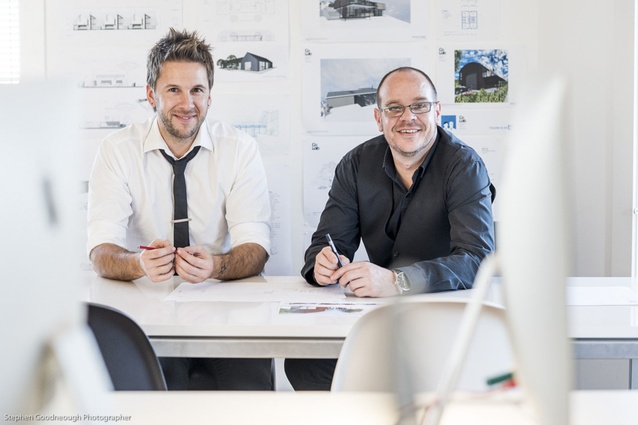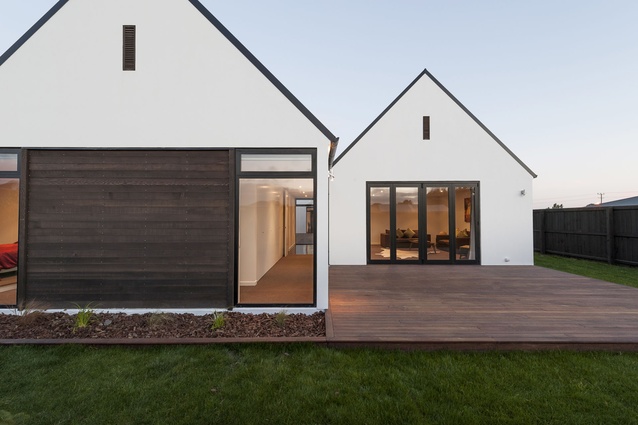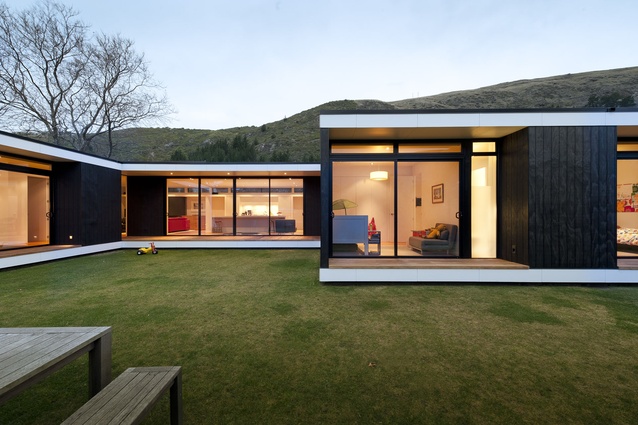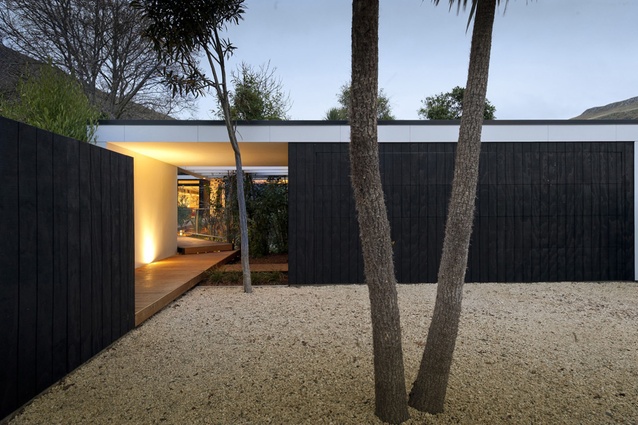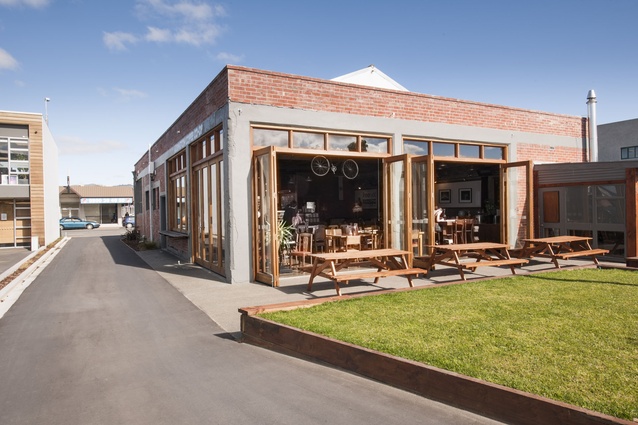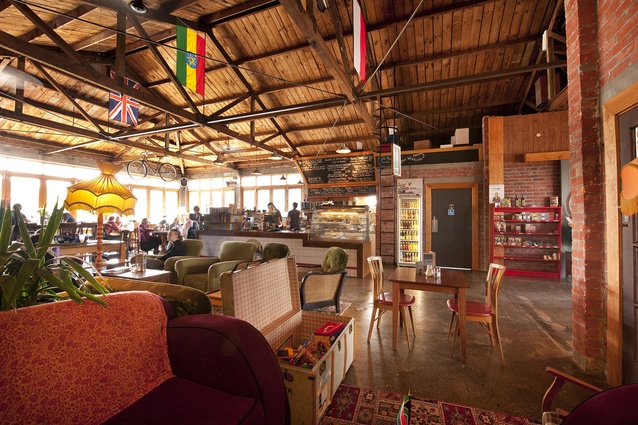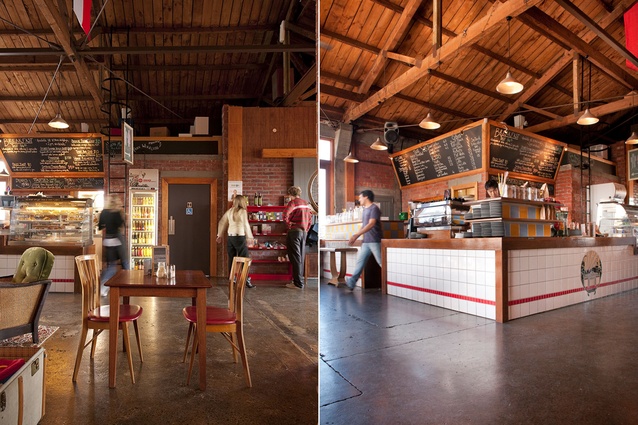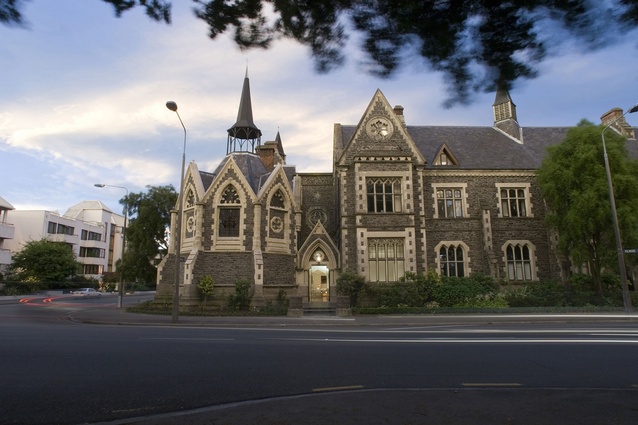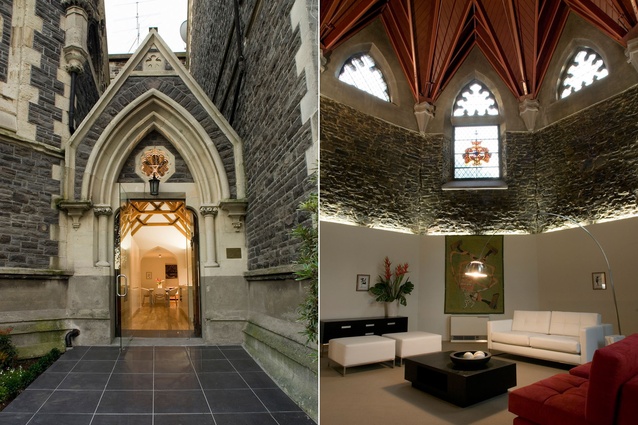The monuments men
Joining forces following the catastrophic earthquakes of February 2011, designer Tobin Smith, 36, and architect Blair Paterson, 43, merged their Christchurch design and architectural practices to form CoLab Architecture.
Three years on, the two-man band has tripled in size and is playing a small but important role in shaping the city’s future. On the to-do list these days are 33 projects, each in the development-and-design phase, including a series of townhouses in burgeoning Victoria Street, homes in Canterbury and Central Otago and the construction of a furniture showroom and other retail outlets, bars and restaurants. The conversion of a 19th-century heritage flour mill in Addington that will, eventually, be a mix of residential, retail, hospitality and commercial offices has just had heritage funding and resource consent for change-of-use approved.
“It is our largest heritage project to date and presents unique challenges from architectural, structural and pecuniary perspectives,” says Smith. “We see this as one of the last chances for us to retain a stunning example of this raw industrial aesthetic (which is almost impossible to recreate) and make it something unique for Christchurch.”
Urbis: Tell us how your collaboration came about.
Tobin Smith: After studying design at Christchurch Polytechnic Institute of Technology, I worked for +MAP Architects for a couple of years before breaking out on my own with Form Architecture and Design in 2004. I had the privilege of working on some amazing preservation projects, like the Cranmer Court apartments set within a group of iconic Victorian Gothic buildings. Looking back though, man, I was green; it was a pretty steep learning curve!
Blair Paterson: I started out with Warren and Mahoney whilst studying at Christchurch Polytechnic Institute of Technology and continued working for them during my architecture degree at The University of Auckland. After graduation, I returned from Auckland to work full time with them for 11 years in Christchurch before moving on to +MAP where Tobin and I met. We found we had a lot in common in and out of the office but it wasn’t until the ’quakes, 10 years later, after we’d both gone out on our own, that we came together to form CoLab. At the time of the ’quakes, we were both working as sole practitioners and, after some discussion, it became a logical decision to band together to take on the anticipated workload born out of the rebuild.
U: Which architectural style do you most identify with?
TS: We’re unashamed modernists. We draw inspiration from work that responds well to its surrounding context, both dense urban cityscapes and wide-open landscapes. Personally, I’ve always been drawn to post-war modernism exemplified by the LA Case Study Houses. The open and modular nature of this work is something that resonates.
U: Describe the architectural principles that anchor your projects.
TS: As we often find ourselves working within tight budgets and with small sites, we spend a lot of time reconsidering how people actually use the spaces they inhabit. By constantly challenging ourselves to simplify, reduce and distil our ideas, we manage to squeeze a lot of amenities into a surprisingly small footprint without compromising on the sense of space.
BP: For us, beauty comes from creating strong, simple, functional forms that are both elegantly proportioned and cleverly executed, with a preference for natural materials. By analysing every detail of a building’s environment or an original historic structure – from the materials used to the craftsmanship – each project becomes like a kind of archaeological dig where our concept is guided as much by a client’s brief and their lifestyle as by a building’s context.
U: How do you view CoLab’s role in the regeneration of Christchurch?
TS: Given our past successes with historical conversions, we feel strongly about retaining as much of our architectural history as we can. The Cranmer Court apartment conversion, completed in 2007, was a perfect example of redefining spaces within an historic context. We exposed the original construction and inserted a contemporary interior that stood in stark contrast to the Victorian Gothic stone-and-timber encasement. Our transformation of an old mechanic’s workshop into the Coffee Co-op café is another example of injecting new life into an old building.
BP: Alongside our heritage buildings, Christchurch also has a strong modernist aesthetic. After losing many of these iconic buildings, we have a strong desire to reflect these design aesthetics in inner-city residential projects.
U: What are the greatest challenges you face as architects in post-earthquake Christchurch?
TS: The stop-start nature of certain projects makes it difficult to progress with a number of projects. The Manchester Street development is a good example of what is indicative of challenges facing major developments within the city, where the impetus of a project revolves around the future of one anchor building – in this case whether the YHA will remain or be demolished. Where there are multiple landowners involved, it takes a long time for people to agree on plans before we can move to the next phase. It’s also a common theme in Christchurch for the Canterbury Earthquake Recovery Authority to take ownership of sites earmarked for the city’s new blueprint, as was the case with the building we’d designed for the Community Law Canterbury site on Madras Street.
BP: The other major challenge is dialogue. Christchurch’s architectural fraternity still has an archaic mentality towards sharing information with other practices; operating in this semi-secretive manner creates major obstacles to progress. Given the extent of redevelopment that’s needed in Christchurch, it’s imperative that lines of communication are established between practices to ensure buildings are designed in harmony with each other. At the end of the day, the more collaborative the approach, the better the result for the city and its people.

